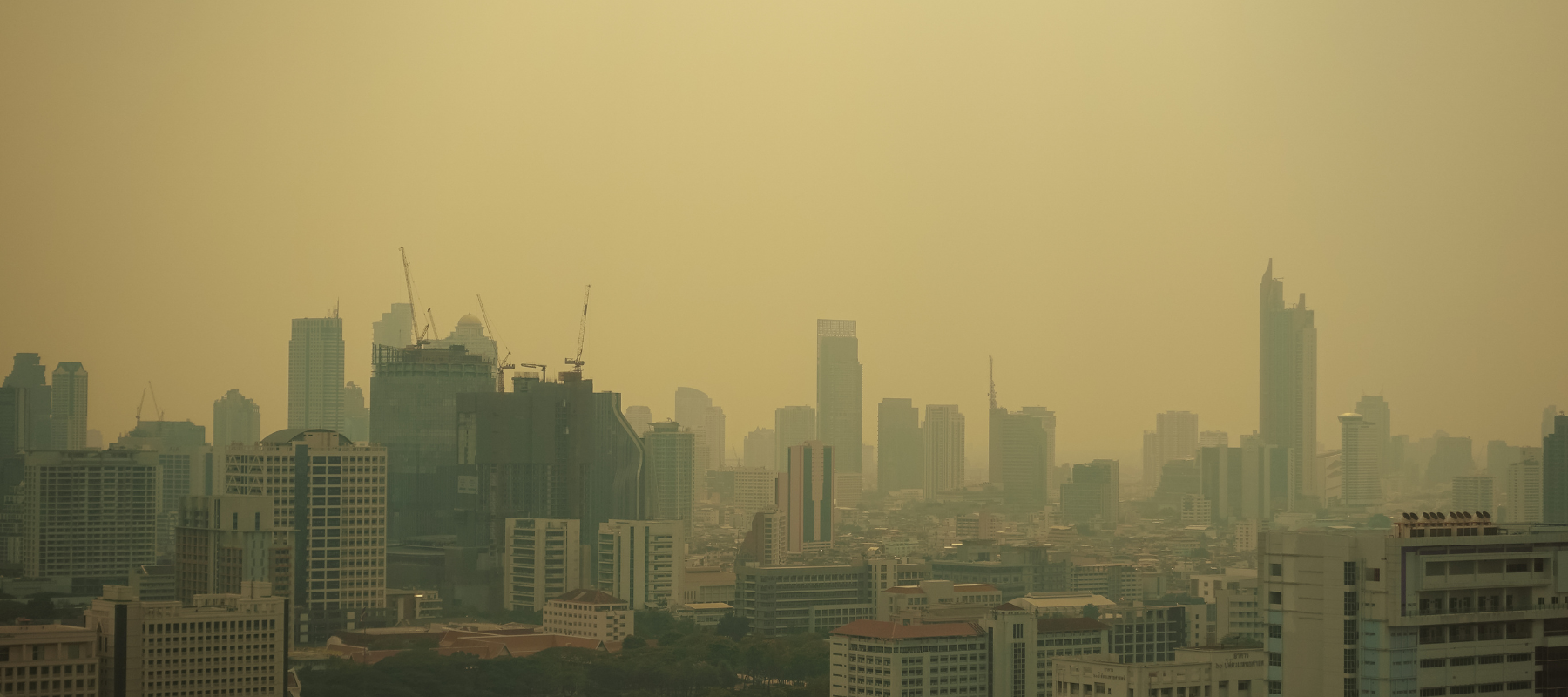
Comprehensive Guide to Understanding and Improving Air Quality Index
Air quality significantly impacts our health and well-being, yet it's often overlooked until we encounter problems like haze from wildfire smoke or a smoggy day. The Air Quality Index (AQI) is a vital tool for understanding and managing air quality. In this blog, we'll delve into what AQI is, how to read it, where to monitor it, the causes and effects of bad air quality, and practical tips for improving and protecting yourself from poor air quality.
What is Air Quality Index (AQI)?
The Air Quality Index (AQI) is a numerical scale used to communicate the quality of air in a specific area. Developed by the Environmental Protection Agency (EPA) in the United States, AQI helps the public understand how clean or polluted the air is and what associated health effects might be of concern. The AQI ranges from 0 to 500, where lower values indicate better air quality, and higher values signify worsening air quality.
The Purpose of AQI
The primary purpose of the AQI is to provide timely and easy-to-understand information about daily air quality. It helps individuals make informed decisions about their outdoor activities and take necessary precautions to protect their health, especially those who are more vulnerable to air pollution.
History of AQI
The concept of the AQI has evolved over time. It was first introduced in the United States in the 1960s, and many countries have since adopted their own versions. The standardization of AQI enables global comparisons and encourages international cooperation in addressing air pollution.
How to Read Air Quality Index
Reading the AQI is straightforward once you understand its components. The AQI scale is divided into six categories, each corresponding to a different level of health concern.
AQI Scale and Categories

- 0-50 (Good): Air quality is considered satisfactory, and air pollution poses little or no risk.
- 51-100 (Moderate): Air quality is acceptable; however, there may be some concerns for a small number of individuals who are sensitive to air pollution.
- 101-150 (Unhealthy for Sensitive Groups): Members of sensitive groups may experience health effects. The general public is less likely to be affected.
- 151-200 (Unhealthy): Everyone may begin to experience health effects; members of sensitive groups may experience more serious health effects.
- 201-300 (Very Unhealthy): Health alert: everyone may experience more serious health effects.
- 301-500 (Hazardous): Health warnings of emergency conditions. The entire population is likely to be affected.
Pollutants Monitored
The AQI is calculated based on the concentrations of several key pollutants: particulate matter (PM2.5 and PM10), ground-level ozone (O3), nitrogen dioxide (NO2), sulfur dioxide (SO2), and carbon monoxide (CO). Each of these pollutants has specific health implications and is monitored closely to determine the overall AQI.
Interpreting Data
To interpret AQI data, simply refer to the scale and categories mentioned above. For example, an AQI of 75 falls in the 'Moderate' category, indicating that air quality is generally acceptable but might pose a risk to people who are unusually sensitive to air pollution.
Color Coding
The AQI uses a color-coded system to enhance understanding:
- Green (Good)
- Yellow (Moderate)
- Orange (Unhealthy for Sensitive Groups)
- Red (Unhealthy)
- Purple (Very Unhealthy)
- Maroon (Hazardous)
Where to Monitor Air Quality Index
There are several reliable sources where you can monitor the AQI in your area.
Trusted Websites & Mobile Apps
In the United States, the EPA's AirNow website contains real-time AQI data. IQAir and Plumbe Labs offer air quality monitoring for your area, with apps available. Plumbe Labs is also integrated into weather apps on phones for tracking air quality.

Local Resources
Local news outlets and community organizations often report on air quality, especially during events like wildfires or industrial accidents. Staying informed through these channels can provide immediate, localized updates.
What Causes Bad Air Quality?
Bad air quality is the result of various natural and human activities.

Natural Causes
- Wildfires: Wildfire smoke can significantly degrade air quality, producing high levels of particulate matter.
- Volcanic Eruptions: Volcanic ash and gases can pollute the air and affect air quality over large areas.
- Dust Storms: Dust carried by wind from deserts or dry regions can increase particulate matter in the air.
Human Activities
- Vehicle Emissions: Cars, trucks, and buses emit pollutants such as NO2 and PM, contributing to poor air quality.
- Industrial Pollution: Factories and power plants release a variety of pollutants, including SO2 and PM.
- Construction Activities: Dust and emissions from construction sites can worsen air quality.
- Agricultural Practices
- Pesticides: The use of chemicals in agriculture can release harmful substances into the air.
- Livestock Emissions: Gases like methane from livestock contribute to air pollution.
- Crop Burning: Burning agricultural waste releases large amounts of smoke and particulate matter.
Climate Change
Climate change exacerbates air quality issues by increasing the frequency and intensity of wildfires, altering weather patterns that can trap pollutants, and contributing to higher levels of ground-level ozone.
What are the Effects of Bad Air Quality on Our Health?
Exposure to pollutants can cause or exacerbate conditions like asthma, bronchitis, and other respiratory infections. Air pollution is also linked to cardiovascular problems, including heart attacks and strokes. Additionally, increased levels of pollutants can trigger allergic reactions and worsen symptoms. Children, the elderly, and individuals with preexisting health conditions are particularly susceptible to the adverse effects of air pollution, requiring special attention and protective measures.
How Can You Improve Air Quality Index?
Improving air quality requires collective efforts at various levels.
Government Policies
Effective regulations and policies, such as the Clean Air Act in the United States, play a crucial role in controlling emissions from vehicles, industries, and other sources. Enforcement of stricter emission standards and investing in clean energy solutions are essential steps.
Community Actions
Community-driven initiatives, such as tree planting drives and public awareness campaigns, can significantly impact air quality. Educating the public about the sources and effects of air pollution encourages more responsible behavior.

Technological Solutions
Advancements in green technology, such as electric vehicles, renewable energy sources (solar, wind), and emission control systems, offer promising solutions to reduce air pollution.
How Can You Improve Air Quality at Home?
Improving indoor air quality is crucial, as we spend a significant amount of time indoors.
Indoor Plants
Certain indoor plants, like spider plants and peace lilies, can naturally purify the air by absorbing pollutants.
Ventilation
Proper ventilation is essential for reducing indoor pollutants. Use exhaust fans in kitchens and bathrooms and ensure regular maintenance of HVAC systems to improve airflow and filter out contaminants.
HEPA Filter Air Purifier
High-Efficiency Particulate Air (HEPA) filter air purifiers are among the most effective tools for improving indoor air quality. HEPA filters are designed to capture at least 99.97% of particles as small as 0.3 microns, including dust, pollen, mold spores, pet dander, and even some bacteria and viruses. By trapping these tiny pollutants, HEPA air purifiers can significantly reduce the number of airborne contaminants, leading to a healthier indoor environment.
Household Products
Choose eco-friendly cleaning products and avoid using aerosols and other products that emit volatile organic compounds (VOCs).
Smoking and Pets
Avoid smoking indoors to prevent the accumulation of harmful chemicals. Regularly groom pets and clean their living areas to reduce dander and hair that can contribute to indoor pollution.
How to Protect Ourselves from Bad Air Quality?
Taking proactive steps to protect yourself from poor air quality is essential, especially during high pollution events.
Personal Protective Equipment
Using face masks can help filter out harmful particles and protect your respiratory system. For example Cambridge Mask PRO where it can filters out harmful particles like dust, smoke, and allergens, reducing exposure to contaminants that can worsen respiratory issues or trigger allergies. The mask can be washed and reused when needed making it easy to wear when needed.
Lifestyle Adjustments
Limit outdoor activities when the AQI indicates poor air quality. Stay indoors, especially during peak pollution times, and exercise in well-ventilated areas or indoors.
Health Precautions
Individuals with respiratory conditions should follow their doctor's advice, keep medications readily available, and stay updated on air quality forecasts.
Emergency Preparedness
During severe air quality events, such as those caused by wildfire smoke, have an action plan. This includes staying indoors, using air purifiers, and having essential supplies on hand.
Conclusion
Understanding the Air Quality Index and its implications is crucial for maintaining good health and a safe environment. By staying informed, advocating for better policies, and taking personal measures to improve and protect air quality, we can make a significant difference. Remember to monitor the AQI regularly, take necessary precautions during high pollution days, and contribute to efforts aimed at reducing air pollution.
For more information on air quality and how to protect yourself, visit trusted sources like the EPA's AirNow website or download reliable mobile apps for real-time updates.
EPA AirNow: AirNow.gov
World Health Organization: WHO.int
IQAir: IQAir.com
By staying proactive and informed, we can all contribute to cleaner air and a healthier environment.



